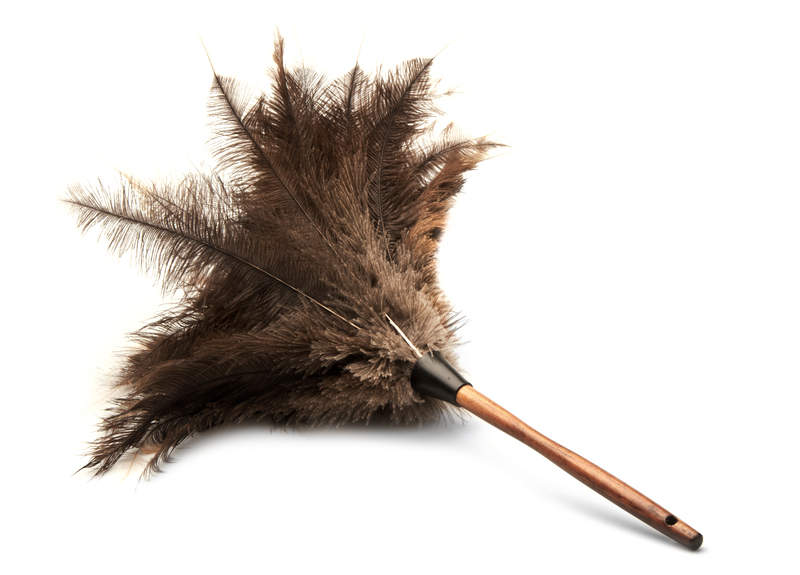Keep Your Bathroom Mold-Free with These Pro Tips
Posted on 19/09/2025
Keep Your Bathroom Mold-Free with These Pro Tips
Mold is a common yet frustrating problem for homeowners, particularly in bathrooms. Because of the persistent humidity and warmth, bathrooms can become the ideal breeding ground for mold and mildew. Left unchecked, it not only causes unpleasant odors and unsightly stains but also poses significant health risks. Fortunately, it is entirely possible to prevent bathroom mold growth. In this guide, we will share effective, practical, and expert-backed strategies for keeping your bathroom mold-free. Read on to discover comprehensive tips and advice for maintaining a fresh and healthy bathroom environment.

Why Mold Grows in Bathrooms
Understanding why bathrooms are prone to mold is the first step in prevention. Mold and mildew love areas where there is:
- High Humidity — Showers, baths, and running water all contribute to moisture that hangs in the air and clings to surfaces.
- Poor Ventilation — Steamy air needs an escape route, and without proper ventilation, moisture lingers for longer periods.
- Organic Material — Mold feeds on soap scum, towels, drywall, wood, and even dust.
- Warm Temperatures — Most bathrooms maintain a steady warmth, perfect for fungal growth.
These factors combine to create a mold-friendly environment. But with a bit of effort, you can dramatically lower the risk of bathroom mildew and mold infestations.
1. Optimize Bathroom Ventilation
Install or Upgrade Your Exhaust Fan
The top tip for a mold-free bathroom is to ensure proper ventilation. A quality exhaust fan pulls moisture-rich air out, reducing the likelihood of mold thriving:
- Choose a fan rated for your bathroom's size: A fan that's too weak won't clear moisture effectively. Check the cubic feet per minute (CFM) rating for best results.
- Run the fan after every shower or bath: Let it run for at least 20 minutes to fully clear out lingering steam.
Open Windows and Doors
Whenever weather allows, keeping windows open during and after showers dramatically decreases moisture buildup. Even leaving the door slightly ajar helps by promoting airflow.
2. Wipe Down Wet Surfaces Immediately
Standing water on walls, floors, and counters provides a breeding ground for mold. After every bath or shower session:
- Use a squeegee to remove water from glass doors and tiles.
- Dry sinks, counters, and tubs: With a towel or microfiber cloth, wipe all wet surfaces.
- Pay special attention to grout lines and corners, which stay damp longer and are hot spots for bathroom mold growth.
By making this a daily habit, you'll greatly reduce the time that moisture can support mold and mildew.
3. Keep Humidity Levels in Check
Monitor Humidity with a Hygrometer
To prevent bathroom mold, it's essential to keep humidity below 50%. Install an inexpensive hygrometer to monitor levels. If humidity frequently spikes, consider:
- Running a dehumidifier in problem areas.
- Increasing fan usage or upgrading to a more powerful model.
- Opening doors or windows during and after bathing.
Limit Moisture-Producing Activities
- Take shorter and slightly cooler showers to reduce steam.
- Turn on the exhaust fan before starting the shower and leave it running after.
- Promptly fix leaky faucets or pipes.
4. Choose Mold-Resistant Bathroom Materials
Construction and decorating decisions can have a big impact on how resistant your bathroom is to mold:
- Mold-resistant paint: Specialized paints prevent mold from gaining a foothold on your walls and ceilings.
- Moisture-resistant drywall (greenboard or cement board): Use these behind tiles and on bathroom walls rather than regular drywall.
- Tile or vinyl flooring: Unlike carpet or wood, these surfaces don't harbor organic material that mold loves.
- Install mold-resistant caulk around tubs, sinks, and backsplashes.
Tip: If renovating, discuss mold-resistant options with your contractor for peace of mind and long-term protection.
5. Maintain and Clean Regularly
Create a Weekly Cleaning Schedule
Consistent cleaning is key to keeping your bathroom fresh and mold-free. Regular cleaning removes mold spores before they have the chance to develop:
- Clean tile, grout, sinks, and tubs with a mild, mold-inhibiting bathroom cleaner weekly.
- Don't forget to scrub under counters and behind the toilet.
- Regularly inspect caulking and grout for cracks or wear.
Address Small Mold Spots Immediately
If you notice the first signs of mildew and mold--such as discoloration, a musty odor, or fuzzy patches--act fast:
- Clean small areas with a solution of white vinegar and water (1:1 ratio) or a hydrogen peroxide spray.
- Allow the cleaner to sit for 10-15 minutes before scrubbing with a stiff brush.
- Always dry surfaces thoroughly after cleaning.
6. Fix Leaks Quickly
Hidden leaks are one of the most common causes of persistent bathroom mold. Check regularly for:
- Dripping faucets or showerheads.
- Water stains on the floor, ceiling, or walls below bathrooms.
- Loose toilet bases or failing seals around tubs/sinks.
Fast repairs will stop moisture buildup before it becomes a mold problem.
7. Keep Towels and Rugs Dry
Towels and bath mats absorb large amounts of moisture and can easily become mildew breeding grounds. To keep your bathroom and linens fresh:
- Hang towels out to dry after every use – spread them out for quicker drying.
- Wash bath mats and towels weekly.
- Avoid hanging wet towels in poorly ventilated bathrooms.
- Use hooks or heated towel rungs to speed drying.
8. Declutter and Organize Your Bathroom
Cluttered shelves and packed shower caddies can trap moisture and hide areas of mold growth. Stay organized by:
- Limiting the number of products in your shower or on counters.
- Storing unnecessary items elsewhere, especially those that can absorb moisture (like extra toilet paper rolls).
- Ensuring storage baskets and caddies have drainage holes to prevent pooled water.
9. Let in Natural Light
Mold thrives in dark, damp places. By maximizing natural light exposure, you make your bathroom less welcoming to mildew:
- Open blinds or curtains during daylight hours.
- Consider installing a skylight or privacy glass window if possible.
- Use bright, moisture-resistant LED lighting in enclosed bathrooms.
10. Use Natural and Chemical Mold Preventatives
Adding extra defenses against bathroom mold and mildew is a smart strategy. Consider:
- Vinegar sprays: Keep a spray bottle of undiluted white vinegar and spritz tiles and grout after showering. Allow to air dry without rinsing.
- Baking soda: Sprinkle on surfaces and scrub with a damp sponge to clean and deodorize.
- Mold-inhibiting bathroom cleaners: Choose products with antifungal additives for regular use.
- Essential oils: A few drops of tea tree oil or eucalyptus oil in your cleaning routine add extra mold-fighting power and a fresh scent.
Frequently Asked Questions About Bathroom Mold Prevention
Is bathroom mold dangerous to health?
Some mold species can trigger allergies, asthma, or respiratory issues. Prolonged exposure, especially in small or unventilated bathrooms, can worsen health problems. Keeping your bathroom mold-free is vital for family health.
How can I tell if I have a hidden mold problem?
Look for persistent musty odors, visible staining or discoloration, bubbling paint, or ongoing humidity and condensation. If you suspect a hidden problem, it's best to consult a mold remediation professional.
What should I do if mold keeps coming back?
Recurring mold suggests ongoing moisture problems. Re-examine ventilation and check for hidden leaks. Sometimes a deep clean with a bleach-and-water solution (1 cup bleach to 1 gallon water) is necessary, but never mix bleach with ammonia-based cleaners. Persistent issues may require replacing drywall or caulking.
Are natural mold remedies effective?
White vinegar, hydrogen peroxide, and baking soda are all effective for small surface mold problems and prevention. For severe infestations, chemical cleaners or professional remediation are best.

Conclusion: Your Path to a Mold-Free Bathroom
By implementing these pro tips for bathroom mold prevention, you can safeguard your bathroom against unwanted mold and mildew. The keys to success are consistent cleaning, excellent ventilation, moisture control, and early intervention. With vigilance and a little regular effort, you can keep your bathroom mold-free and enjoy a fresh, healthy, and inviting space every day.
Don't let mold take over--start using these expert strategies today and make a mold-free bathroom your new standard.
Additional Resources
- CDC: Mold in Homes
- EPA: Mold and Health
- How to Remove Mold (Family Handyman)




